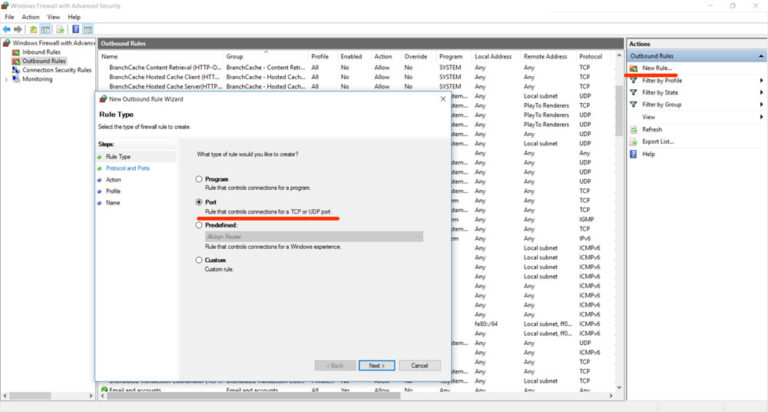

- #How to open speficfic udp and tcp ports mac os firewall code#
- #How to open speficfic udp and tcp ports mac os firewall professional#
To a listening application, which usually discards it More likely to get a response and be marked open, butįor the rest, the target TCP/IP stack simply passes the empty packet up Those ports for which Nmap has a protocol-specific payload are The most curious element of this table may be theīiggest challenges with UDP scanning: open ports rarely respond to empty
#How to open speficfic udp and tcp ports mac os firewall code#
Other ICMP unreachable errors (type 3, code 1, 2, 9, 10, or 13) ICMP port unreachable error (type 3, code 3) No response received (even after retransmissions) The command “ss” is really useful to show all the established connections and also listening in our Linux operating system.Īs you have seen, we have different methods to know if a port is open or closed on a remote host and also on our local computer, depending on what we are interested in knowing, we will use one tool or another, the most important thing is that all the Ports that are not in use should be closed for security through the firewall, in this way, we will avoid security problems and exploitation of vulnerabilities in the servers.Any UDP response from target port (unusual) In the case that we want to show TCP connections, we will have to use the “-t” argument and in the case of wanting to show UDP connections, we will have to use the “-u” argument. In the following image you can see an example of ports that are “READY” to accept incoming connections: If we want to see only the ports that are “listening”, we must put the following command:

If we want to see the status of all ports (sockets) we can put the following order: We are going to get a large number of ports in use by the different programs and services that we will have installed in the operating system. We will see the status of the connection (ESTAB), and also the packages received and sent, the local address and the port, as well as the remote address and the port used. Once we have executed this order, we can see the following: If we open a console, both in user mode and superuser mode, we must execute: The “ss” tool is already pre-installed on Linux operating systems as part of the system itself, as is the case with the “ping”, “traceroute” and many other tools. If you have used the netstat tool in the past, we are sure that you will love this new “ss” tool. This tool is in charge of checking all open or closed sockets on our Linux server, and we will be able to see the statistics of said open or closed sockets. If we are interested in knowing the status of all TCP, UDP, ICMP and other protocols in our operating system, a widely used tool has always been “netstat”, however, this tool has been in second place thanks to the new “ss” that will provide us with a large amount of information easily and quickly. View the status of TCP and UDP connections We must check in detail if a certain port is open or not so that our services are accessible from abroad. We will get all the chains and rules from the iptables “filter” table, in the case of using Nftables, you must indicate the following command:Ī very important security recommendation is that all ports on a Linux server should be closed, in this way, when we raise a service listening on a certain port, it will not be accessible unless we allow it in the firewall. If in our Linux terminal we put the following: We can modify this policy for a restrictive one, and even add new tables, chains and rules to allow or deny traffic. By default, on all Linux servers the policy is permissive, that is, all packets are accepted by policy. If we want to check if we have an open port to accept connections, the first thing to check is the status of the firewall in our Linux operating system.
#How to open speficfic udp and tcp ports mac os firewall professional#
As you can see, checking the open ports with Nmap is really simple, in addition, we can scan all the hosts on the home or professional local network, to later scan the different ports.


 0 kommentar(er)
0 kommentar(er)
